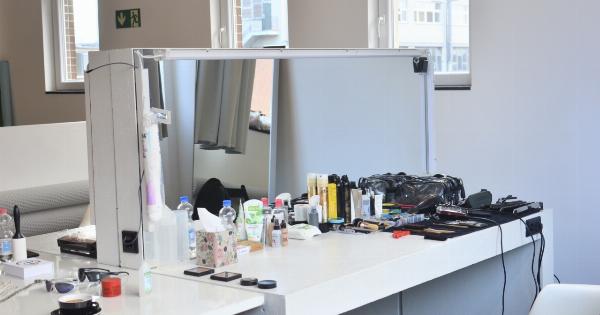Hair loss is a common concern that affects millions of men and women worldwide. It can be caused by various factors such as genetics, hormonal changes, nutritional deficiencies, stress, and certain medical conditions.
Losing hair can be distressing, leading to reduced self-confidence and even affecting one’s overall quality of life.
Why Does Hair Loss Occur?
Hair loss can occur due to several reasons. One of the primary causes is genetics, with a condition known as male or female pattern baldness being the most prevalent.
This condition is often linked to the hormone dihydrotestosterone (DHT), which leads to the miniaturization of hair follicles and eventually results in hair thinning and loss.
Hormonal changes, particularly during pregnancy and menopause, can also contribute to hair loss in women. Imbalances in thyroid hormones can disrupt the hair growth cycle and lead to excessive shedding.
Nutritional deficiencies, especially of iron, zinc, and biotin, can weaken hair and make it more prone to breakage.
Stress, whether physical or emotional, can cause a condition called telogen effluvium. This condition forces a larger number of hair follicles into a resting phase, resulting in significant hair shedding.
Certain medications, such as those used for cancer treatment or autoimmune diseases, can also have hair loss as a side effect.
Tackling Hair Loss: A Holistic Approach
If you’re struggling with hair loss, it’s essential to address the issue from multiple angles. While there’s no one-size-fits-all solution, several strategies can help you conquer hair loss and promote regrowth.
Consider following these steps as part of a comprehensive 1-month plan:.
1. Consult a Dermatologist
Start by consulting a dermatologist who specializes in hair loss. They can help identify the underlying cause of your hair loss and recommend appropriate treatments or lifestyle changes.
A professional diagnosis is crucial to develop a personalized plan that caters to your specific needs.
2. Maintain a Nutrient-Rich Diet
A balanced diet is essential for healthy hair growth. Include foods rich in vitamins (especially A, C, and E), minerals (such as iron and zinc), and protein.
Green leafy vegetables, berries, fish, eggs, and nuts are just a few examples of hair-friendly foods. Consider incorporating a daily multivitamin or specific hair supplements into your routine after consulting with a healthcare professional.
3. Practice Good Hair Care Habits
Treat your hair gently to minimize damage and breakage. Avoid using harsh chemicals, excessive heat from styling tools, and tight hairstyles that tug on the hair.
Use a wide-toothed comb or a brush with soft bristles to detangle hair, starting from the ends and working your way up to avoid unnecessary hair loss.
4. Manage Stress Levels
Stress can wreak havoc on your overall health, including your hair. Find healthy ways to manage stress, such as regular exercise, meditation, deep breathing exercises, or engaging in hobbies that bring you joy.
Prioritize self-care and ensure you take time to relax and unwind.
5. Try Over-the-Counter Treatments
Several over-the-counter treatments can help slow down hair loss and promote regrowth. Look for products containing ingredients such as minoxidil, which is FDA-approved for treating pattern baldness.
These treatments are available in various forms, such as shampoos, foams, or serums. However, consult with your dermatologist before trying any new products to ensure they align with your specific needs.
6. Explore Prescription Medications
If over-the-counter treatments don’t yield satisfactory results, your dermatologist may prescribe medications such as finasteride (for men) or spironolactone (for women).
These medications target the hormonal factors involved in hair loss and can be effective in certain cases. However, they may have potential side effects, so it’s important to discuss the risks and benefits with your healthcare provider.
7. Consider In-office Procedures
In-office procedures can be a more advanced approach to combat hair loss. Options such as platelet-rich plasma (PRP) therapy, microneedling, and laser therapy have shown promising results in stimulating hair growth.
These procedures are typically performed by dermatologists and should be discussed with a professional to determine if they are suitable for you.
8. Embrace Natural Remedies
While scientific evidence is limited, some individuals have experienced success with natural remedies for hair loss.
These may include using essential oils (such as rosemary or peppermint oil) in a carrier oil for scalp massages, applying aloe vera gel, or rinsing hair with apple cider vinegar. However, it’s important to remember that results vary, and these remedies may not work for everyone.
9. Practice Scalp Care
A healthy scalp provides a fertile environment for hair growth. Keep your scalp clean by using a mild shampoo and conditioner suitable for your hair type. Avoid excessive scalp scratching or picking, as it can damage hair follicles.
Regularly exfoliate your scalp to remove any buildup or excess sebum that may hinder hair growth.
10. Stay Consistent and Patient
Addressing hair loss requires commitment and patience. Remember that regrowing hair is a gradual process and results may not be immediate. Follow your personalized plan consistently and stay optimistic.
With time, effort, and the right approach, you can conquer hair loss and restore healthy, vibrant locks.




























